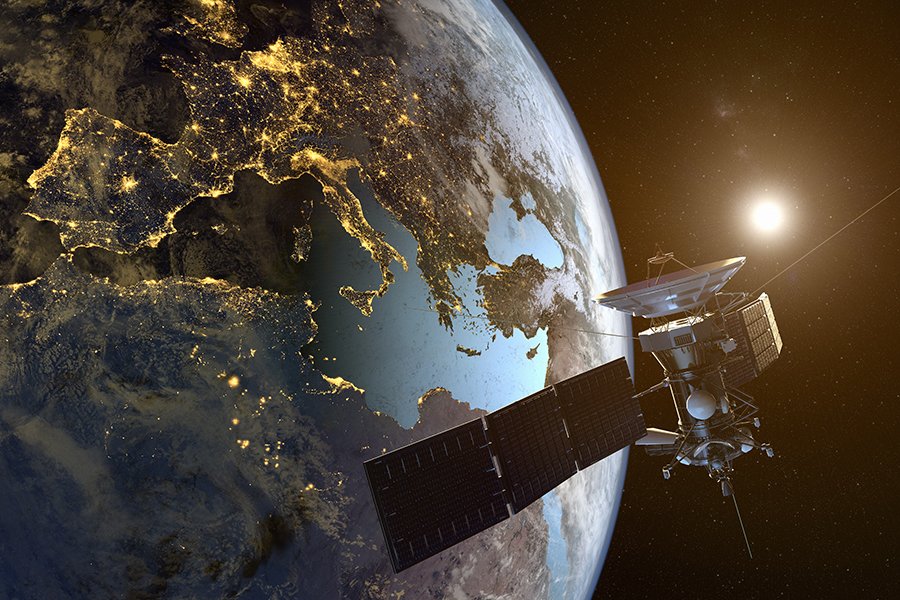In race to expand global connectivity, satellite providers are emerging as major players, with experts predicting a nearly 725% increase in the number of satellites orbiting Earth by 2030.

In the race to expand global connectivity, satellite providers are emerging as major players, with experts predicting a nearly 725% increase in the number of satellites orbiting Earth by 2030. Ookla®, a prominent data analysis firm, has released fresh data on satellite internet providers, focusing on SpaceX’s Starlink, Viasat, and Skylogic, during Q2 2023.
The findings reveal significant growth in the satellite internet industry and remarkable performance by Starlink in various regions.
Starlink Wins Over Europe
Starlink continues to impress users across different continents, particularly in Europe. Using Net Promoter Score (NPS) data, Ookla compared Starlink’s performance against an aggregate of all fixed broadband providers. NPS measures user satisfaction and loyalty, with higher scores indicating a more loyal customer base.
In countries like France, Germany, Italy, New Zealand, and the United Kingdom, Starlink received significantly higher NPS scores than the combined fixed broadband providers during Q2 2023. France, in particular, stood out with an NPS score of -15.98 for fixed broadband providers, while Starlink scored an impressive 48.83.
Germany, with the lowest NPS rating among European fixed broadband providers at -30.10, still saw a relatively positive score of 38.19 for Starlink. Interestingly, the median download speeds for both Starlink and fixed broadband providers in Germany were quite similar.
In Italy and the U.K., Starlink outperformed fixed broadband providers in both NPS scores and median download speeds during Q2 2023. These results suggest that users in regions with limited fixed broadband options are particularly satisfied with Starlink’s service.
Steady Speeds Across Europe
Starlink also maintained stable speeds across Europe. Median download speeds remained consistent or improved slightly in 23 out of 27 countries surveyed from Q2 2022 to Q2 2023. Starlink achieved speeds greater than 100 Mbps in 14 countries, greater than 90 Mbps in 20 countries, and greater than 80 Mbps in 24 countries.
While Starlink’s speeds trailed behind fixed broadband providers in some countries, the overall performance was strong, especially in nations where traditional broadband options are limited.
Oceania Benefits from Satellite Internet
Oceania, with its remote and rural populations, greatly benefits from satellite internet connections. Starlink provided stability in median download speeds for users in New Zealand and Australia, with notable improvements year-over-year. However, Tonga experienced a decrease in speeds during Q2 2023.
Upload speeds also remained stable or improved in Oceania, making satellite internet an essential tool for connecting remote regions.
Starlink’s Promising Start in Africa
Starlink made its debut in Africa, launching in Nigeria in early 2023. Early results show promising performance, with faster median download speeds compared to aggregated fixed broadband providers during Q2 2023. While upload speeds were similar, Starlink’s multi-server latency was slightly higher, likely due to its low-earth orbit (LEO) satellite constellation.
Rwanda also experienced positive results with Starlink, indicating that satellite internet can bridge connectivity gaps in underserved regions.
The Global Satellite Internet Revolution
The satellite internet industry is undergoing a significant transformation. Amazon’s Project Kuiper, China’s ambitious satellite plans, and the Eutelsat-OneWeb merger all signal major developments in the industry. Amazon’s Project Kuiper aims to launch prototype satellites soon, with plans to offer internet service by 2025.
China, with over 362 million people lacking internet access, is working on a satellite constellation to address this gap. The success of SpaceX‘s reusable rockets has inspired China’s efforts to create a similar approach.
Starlink, while leading the satellite market, is expanding rapidly worldwide. The company plans to extend its services in Africa, Asia, and South America, marking a significant expansion beyond its current coverage.
Viasat recently faced challenges with the deployment of its Viasat-3 satellite, potentially triggering substantial insurance claims. This event could impact insurance premiums for satellite companies.
The Eutelsat-OneWeb merger combines satellite networks, expanding enterprise offerings and competing in emerging markets. Shareholders are set to vote on the merger in September.
The European Union is set to launch a multi-orbit constellation project in 2024, aiming to have a fully operational system by 2027.
HughesNet’s Jupiter 3 array aims to provide higher broadband download speeds in the U.S. and Latin America, adding 500 Gbps of Ka-band capacity.
In the midst of these developments, the satellite internet industry is evolving rapidly, promising improved connectivity for people worldwide.
As the 2023 space revolution continues to unfold, satellite providers are reshaping the future of global connectivity, making it more accessible than ever before.
Devices and people are able to connect globally and stay connected from any location thanks to global connectivity in general.